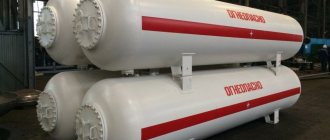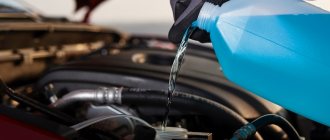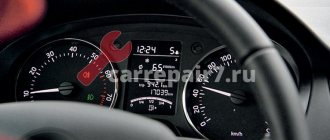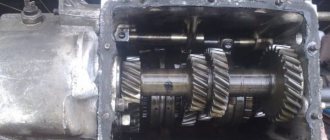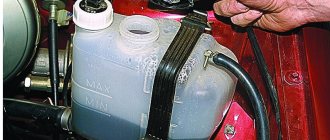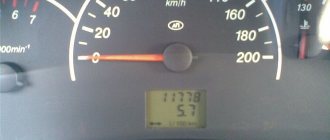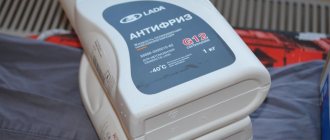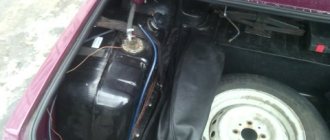To efficiently heat a private home, various types of fuel are used. But among them the most profitable is gas . With the help of gas heating systems, you can maintain the temperature you need in your rooms. Gas heating is most convenient and efficient.
Currently, the most popular heating system for your home is heating using gas cylinders. Of course, like all methods of heating a home, it has its pros and cons. So, let's get down to the theoretical part.
The house is heated using two gases:
1. Butane ( boiling point O degrees )
2. Propane ( boiling point - 40 degrees )
Basics of the physical meaning of transformation
The physical meaning of the transformation is not a big problem. In this case, the conversion method for any gas is similar to that for liquids and bulk materials. The calculation is made according to the following method:
1 m³ = 1,000 liters
Accordingly, 1 liter contains 0.001 cubic meters. If the meter shows that natural gas was consumed in the amount of 0.3 m³ during the day, then in liters this value will be 0.3 x 1000 = 300.
Features of the conversion of liquefied gases
In modern industry, liquefied gases are used in the following areas:
- at industrial enterprises;
- in the production of heat and electricity;
- as reserve stocks during the cold season when consumed by the population;
- as an alternative fuel for vehicles;
- at home.
At home, liquefied gas cylinders are used if there is no centralized mains connected to the house. In this situation, the temperature of the supplied fuel is not taken into account, but only the volume is determined. In some cases, in some regions, temperature corrections may be applied when calculating volume if the meter is not equipped with an appropriate device for compensating the readings.
The mixture is prepared by liquefying butane with propane in various ratios. It is not economically feasible to use methane. When the ambient temperature rises to room temperature, this mixture expands with such intensity that the manufacture of cylinders requires the use of thick walls or the use of expensive, high-strength materials.
The proportionality of the transition of the volume of a gas mixture during its evaporation from a liquid state depends on the following indicators:
- chemical elements included in the composition;
- temperature characteristics and pressure level;
- molar mass and degree of density.
It is not possible to determine the exact proportional ratio of the mixture in the cylinder, so an approximate value is taken into account. It is assumed that at a room temperature of 20 degrees, considered standard, when one liter of fuel evaporates in a liquefied consistency, about 200 gases will be released.
The calculation is performed using the following formula:
Vcube = Vl/5,
- Vcub – volume indicator in cubic meters;
- Vl – indicated value in liters.
When performing the calculation, you should clarify the obtained value, based on the fact that according to safety rules, gas containers are not filled to 15 percent of the total volume.
If we calculate the number of cubes in a filled propane-butane cylinder holding 50 liters when connecting a gas meter, we get the following value:
- 21 kg of gas is pumped into the cylinder;
- the number of cubic meters of gas fuel is 50/5 = 10;
- after adjustment due to incomplete filling of the cylinder, we get the value 10 x 0.85 = 8.5 cubic meters.
The obtained value depends on the ambient temperature, since this indicator affects the pressure level inside the container.
The above calculation provides only an approximate answer. But the molar mass of the gas and its calorific value are of decisive importance in determining the indicators for the use of liquefied gaseous fuel. In this case, gas is calculated in kilograms.
Cubic meters are taken into account only when supplying gaseous fuel in a centralized manner, when determining the consumed volume using an individual metering device. In this case, the conversion from cubic meters to liters is carried out in the standard way, multiplying by 1000.
Selecting the optimal gas tank for consumption
A gas tank is expensive equipment that is purchased and installed for more than one year. Not only the efficiency of the home heating system largely depends on its correct choice. Heating costs may indirectly depend on the type and type of liquefied gas storage facility.
Comparison of above-ground and underground gas tanks
An above-ground gas holder is a cheaper option for autonomous gasification. Such tanks are usually smaller in volume and their installation does not require expensive excavation work.
But, when using above-ground gas tanks for heating needs in winter, it is necessary to take into account that the evaporation of the propane-butane mixture during this period will be reduced and problems with gas pressure are possible.
It is possible, of course, to reduce the temperature threshold for the transition of LPG into the gaseous phase of fuel due to a higher content of propane in the mixture. But this will entail additional costs, since such gas is more expensive than butane.
Underground gas tanks are the most popular storage facilities for LPG.
The depth of immersion of the container should be such that the layer of soil above it is at least 0.6 m. This will protect the storage from freezing and mechanical damage.
Vertical or horizontal gas holder
There are two types of recessed gas tanks in shape:
- Vertical.
- Horizontal.
These containers differ from each other not only in design, but also functionally - in the surface area of the liquefied mixture, called the “evaporation mirror”.
Vertical storage facilities are more often used in autonomous gas systems of small houses or cottages, if their full heating is not required in winter.
Features of a mobile gas tank trailer
A mobile gas holder allows you to solve the problem of heating and creating comfortable living conditions in winter at summer cottages with temporary residence, objects under construction, where gas storage equipment is impractical or technically impossible.
This is a trailer-mounted tank with a capacity of 500-600 liters. How long such a gas tank with a capacity of 600 liters will last can be predicted by taking the average standard used - 30-40 liters of liquefied gas per 1 square meter of room.
It should be understood that the operation of a mobile gas tank as a ground-based tank in winter or in northern regions will require insulation and forced heating of the tank. For this reason, a trailed gas tank is not a completely acceptable heating option.
How to choose a gas tank by volume
Of the typical underground gas tanks, tanks with volumes of 2700 liters and 4850 liters are optimally suitable for country houses and cottages.
When choosing the standard size of a gas storage facility, the following factors must be taken into account:
- If you live permanently in a house with autonomous heating, it is advisable to refill the tank twice a year. This is due to different concentrations of butane and propane in mixtures intended for use in summer and winter.
- The tank should be filled with liquefied phase by 85%. The remaining free volume in the storage is a vapor cushion for hydrocarbons in the evaporation phase.
Therefore, when calculating how much gas can be enough in a gas holder with a capacity of 2700 liters or in a gas storage facility of other sizes, it is necessary to take into account that the rated total volume of a gas holder and its filling volume are not the same thing.
Our calculation of the average values of liquefied gas withdrawal from a gas tank and generally accepted standards allow us to determine the frequency of refilling gas tanks. With an average annual consumption of 30 liters of gas per 1 m2 of heated area, refilling liquefied gas with a volume of 2295 liters in a 2700 liter tank for a house of 100 m2 will be sufficient for 9 months.
Using the same method, but for a house of 150 m2, we calculate how much LPG is enough in a heating system from a 4850 liter gas holder. During the year, 4500 liters are consumed, so a filling volume of 4122 liters is enough to heat the house for 10 months.
From the calculations it is clear that refueling will have to be done twice a year. And this is economically justified due to the use of “summer” and “winter” LPG.
How does a liter compare to a cubic meter?
The liter is a measure of capacity that is not included in the international SI system, but is used very widely. Moreover, it is the liter, and not the “abstract” cubic meter, that is the most common unit of volume measurement in everyday life. For example, it is measured in liters:
- capacity of various vessels intended for household use (buckets, pans, bottles, canisters, containers);
- trunk volume of passenger cars,
- internal volume of refrigerators, freezers, microwaves and ovens;
- capacity of city and tourist backpacks.
The "official" definition of a liter has changed several times. From the beginning of the 20th century until 1964, according to the decision of the General Conference on Weights and Measures, a liter was defined as the volume occupied by a kilogram of water. However, this definition turned out to be not very convenient: the ratio of the volume and mass of a liquid depends on many factors - from atmospheric pressure to air humidity. Therefore, experts abandoned the “reference” to the mass of water. And now a liter means a volume that exactly corresponds to a cubic decimeter - the volume of a cube, each edge of which has a length equal to exactly 10 centimeters, which corresponds to 0.1 meters.
Tariffication of heating in Kemerovo
Heating tariffs in the city of Kemerovo have changed significantly over the past few years. Currently, this tariff is calculated based on the actual amount of hot water consumption by the population of the Kemerovo region and the city of Kemerovo in particular. The heating system includes direct thermal energy, as well as its conductor, which is water circulating through the batteries.
The cost of heating in the Kemerovo region depends on such metrics as:
- price of cold water;
- price of thermal energy;
- internal expenses of the management company
How many liters in a cubic meter: conversion formula
So, a liter is equal to a cubic decimeter (dm^3). In order to calculate the volume of a cube, you need to raise the length of the edge to the third power. A decimeter is equal to 0.1 meters. That is, liter = 0.1 m X 0.1 m X 0.1 m = 0.001 m^3 (one thousandth of a cubic meter).
Thus, one thousand liters “fit” in a cubic meter. And the formula for converting one unit to another will be very simple:
- volume in cubic meters X 1000 = volume in liters.
- volume in liters / 1000 = volume in cubic meters.
By the way, sometimes (extremely rarely, since large volumes of liquids or bulk mixtures are most often measured in “cubes”) to denote a volume equal to a cubic meter, the derivative “kiloliter” can be used, where the prefix kilo- just means a thousand.
How to convert cubic meters to liters and vice versa: examples of calculations
Example 1. The packaging of plastic garbage bags indicates that their volume is 30 liters. What is the capacity of such a package in cubic meters?
Simple solution : 30/1000 = 0.03. The volume of the package is 0.03 (three hundredths) cubic meters.
Step by step, this solution can be described as follows: 30 liters = 30 dm^3 = 30 X 0.1 m^3 = 30 X 0.001 m^3 = 0.03 m^3.
Example 2. According to statistics, on average in Russia one person uses 6 cubic meters of water per month. How many liters of water will an “average” family of three use per day, if we assume that there are 30 days in a month?
Calculation option: A family of 3 people will use 6 X 3 = 18 cubic meters of water per month. Let's convert cubic meters into liters, multiply by 1000 - and we end up with 18,000 liters per month. Divide by the number of days in a month: 18,000 / 30 = 600. As a result, it turns out that the daily water consumption for the family as a whole will be 600 liters.
Example 3 . The size of the bowl of the children's inflatable pool is 2 x 3 meters, the depth of the pool is 1 meter. How long will it take to fill it to the brim if water flows into it at a rate of 30 liters per minute?
Calculation option: Let's calculate the capacity of the pool in cubic meters. 2 m X 3 m X 1 m = 6 m^3. Let's convert to liters: 6 X 1000 = 6,000 liters. It remains to divide the volume in liters by the amount of water flowing per minute: 6,000 / 30 = 200 minutes. Thus, the pool will fill in 200 minutes (3 hours 20 minutes).
The number of liters contained in a cubic meter of gas is not as simple a question as it might seem at first glance, given the peculiarities of using gas fuel. Let's consider ways to convert the volume of gases used as fuel, taking into account their characteristics.
Bath capacity
How many liters of diesel fuel are in 1 ton: how to convert mass into volume
Everyone loves to take a hot bath. But not everyone thinks about the volume of water required for this procedure.
The question about the capacity of the bathtub cannot be answered in monosyllables.
Modern industry produces three types of bathtubs, depending on the material used:
- Made of cast iron.
- Made from acrylic.
- Of steel.
The volume of a product is determined by multiplying its length, width and height.
But it is not always possible to accurately calculate this value, especially when it comes to acrylic bathtubs.
Sometimes performed in an irregular shape, following the contours of the human body, including built-in hoops for holding hands and other delights that make it difficult to accurately determine the volume.
Without boring the reader with lengthy calculations and a large number of numbers, it can be noted that the capacity of the font ranges from one hundred and forty for the smallest models, to two hundred and fifty for huge bathtubs.
The exact parameters are indicated by the manufacturer in the passport of a specific model.
Considering the significant water consumption when taking a bath regularly, a good way to save money is to use a shower. This procedure will require three times less water - about 40.
It is estimated that if you switch from regular bathing to using a shower, the annual savings will be about 37 cubic meters of water.
Another way is to use pre-collected water.
There are many original shower design options on the Internet, including a homemade bucket attached to a hoop, filled with water and turned over using an attached chain.
If you first fill a container with water for washing dishes, washing your face, brushing your teeth for other purposes, you will end up with significant savings.
It is estimated that up to fifteen liters of water escape through an open tap every minute; in an hour this volume will be ninety liters - a considerable consumption.
Considering that more liquid when used by washing dishes and washing under an open tap is wasted, it is worth using the above method to significantly reduce consumption.
Research has established that one person requires about 1000 cubic meters of water annually, if we take into account the costs of producing the goods and products he uses.
But everyone can reduce this figure a little if they take measures to save water in their own home.
And the calculation of the conversion of units will be of considerable help in this regard, in order to represent the scale of the volume of liquid consumed in vain.
Physical meaning of translation
In a physical sense, everything is quite simple. The translation is carried out in the same way for any gases, liquids or bulk materials as follows:
- 1 cubic meter contains 1000 liters,
- 1 liter equals 0.001 cubic meters
- the table shows the quantity contained in 1 cube (1 cube = 1000 cubic decimeters, etc.).
For example, 15 cubic meters of natural gas used by the meter equals 15,000 liters. When converting these values, the temperature of the fuel, the amount of impurities and other factors do not matter.
Zotye T600 Coupe
The desire to increase sales of their crossover led Chinese engineers to the idea of creating a coupe-like version of the Zotye T600 Coupe.
It will be supplied to our market under the original name Coupa, and its distinctive features will be not only a low roofline, but also a small spoiler on the fifth door, modified geometry of the front bumper air intakes, a different radiator grille and black-painted rear pillars.
Zotye T600 Coupe will be equipped with a 1.5-liter gasoline engine and a choice of 5-speed manual transmission or 6-automatic transmission. The more expensive version of the Coupa Royal will add a panoramic roof, 6 airbags, anti-corrosion body treatment (!), as well as light and rain sensors to the list of technical equipment.
voice
Article rating
Use of liquefied gas
It’s a little more complicated with liquefied gas. It is widely used:
- in modern industrial production;
- in thermal and electric power engineering;
- as a reserve stock during the period of the most intensive consumption by the population;
- as a replacement for traditional gasoline or diesel fuel for road transport;
- for domestic purposes.
In the household, it is advantageous to use liquefied gas in cylinders for the operation of gas-consuming household appliances, provided there is no centralized supply line.
Various mixtures of propane and butane are used for liquefaction. The use of methane is not economically profitable, since at room temperature the pressure in the system increases so much that to ensure safety it is necessary to create containers with large wall thicknesses and use materials of increased strength.
The change in gas volume during the transition from the liquid phase to the gaseous phase is determined by the following factors:
- chemical composition;
- pressure;
- temperature;
- density and specific gravity.
To calculate the number of liters of liquefied gas per cubic meters of fuel that have turned into a gaseous state, it is necessary to use the specified characteristics. But since it is difficult to reliably establish the exact composition of the mixture in the cylinder, it is necessary to be guided by an approximate ratio, according to which at a standard temperature of 20 degrees, 1 liter of liquefied gas will produce 200 - ordinary gas. Therefore the formula applies:
Okub = Ol/5
- Cube – volume in cubic meters;
- Ol – volume in liters.
When making calculations, it is necessary to additionally take into account that, for safety reasons, gas cylinders are filled to no more than 85 percent of the total volume.
Is it possible to refill a gas cylinder at a gas station?
Refilling gas cylinders at car gas stations is possible only with specialized equipment and a license. Companies that refill any gas containers are called “gas filling stations.”
Interesting materials:
How to find out what cats are talking about? How to find out about the assigned subsidy? How can I find out about the court's decision? How to find out the volume of a pyramid? How to find out Ogrn? How to find out your mobile operator? How to find out the balance of Kari's installment plan? How to find out where a registered letter came from using a barcode? How to find out the pension coefficient? How to find out your email by nickname on Steam?
Calculation example
It is necessary to determine how many cubic meters of gas one cylinder with a 50-liter propane-butane mixture contains if you pass its contents through a gas meter:
- the mass of the gas mixture pumped into it is about 21 kilograms;
- volume in m³ is equal to 50/5 = 10;
- after adjusting for the filling of the cylinder, we get 10 × 0.85 = 8.5 m³.
This indicator may vary depending on the ambient temperature, since when it decreases, the pressure inside the container decreases, with a corresponding decrease in the volume of fuel.
But the use of liters of gas in cubic meters is only relevant as an approximate calculation. When purchasing this type of fuel, kilograms of the gas mixture and the pressure inside the container are important, and when using individual metering devices, a standard unit of measurement is used - cubic meters, the conversion procedure of which does not depend on the composition of the gas and is determined by a simple arithmetic calculation in the ratio of 1 to 1000.
How to calculate how many cylinders are needed to heat 1 square meter. living space during the heating season? How to effectively heat a private house using gas cylinders, will it be profitable?
You need to know the density of propane to determine the volume in cubes, and you also need to take into account temperature and pressure.
There are 1000 liters in one cubic meter.
We further assume that liquefied propane has a density of 508 g/l.
Its molecular weight is 44 grams/mol (all these indicators can be found in special reference books and tables).
Divide one number by another.
508: 44 = 11.5 (with a small remainder, 11.5 is the amount of g/mol of gas in one liter of liquefied propane).
That's it, now we find out what volume this amount of propane (liquefied, during evaporation) will occupy; if the conditions are normal (temperature, pressure), then this is 22.4 cubic meters.
Now multiply g/mol (11.5) by volume (22.4 liters).
We get 11.5 x 22.4 = 257.6 liters.
There are 1000 liters in a cube, divide 1000: 257.6 = 3.8 liters (with remainder).
We have one liter in question.
Divide 1 by 3.8 = 0.263 (again with the remainder) cubic meters of gas (in this case, liquefied propane) in one liter.
But most often in household gas cylinders, a mixture of propane and butane is used, where the weight and volume indicators are already different.
- In 1 liter of pure liquefied propane there is 0.263 m3 of free propane gas. But we do not receive pure propane gas at retail points of sale. We are offered a mixture of propane and butane. From 1 liter of such a gas mixture you will get 0.230 m3 of free gases at room temperature. At sub-zero temperatures, even less, since butane may not evaporate at all, liters of propane, constituting from 60 to 80% of the mixture, will turn into gas.
- In order to calculate how many cylinders are needed to heat your premises, you need to know at least two parameters - the volume of the cylinders and the power of your boiler. And of course, indirect adjustments will be made by the area and a practical assessment of the efficiency of the entire heating system. Cylinders are mainly used with a standard volume of 50 liters. The useful displacement of 43 liters is swept away. Multiplying by 0.232 we get 9.89 cubic meters of gas in each cylinder. Next, we look at the manual (instructions for the boiler) and look at its maximum gas volume consumption per hour. Of course, the outside temperature will not be as low as possible throughout the entire heating season, and the boiler will only operate at full capacity. The average value can be taken as 80% of the maximum boiler power, even in fairly cold regions. We calculate the total amount of boiler operation during the heating season.
- Now about the benefits of heating with gas from cylinders. The most important condition for profitability is logistics and gas price. Profitability is always “made” by any even the slightest conditions for reducing the cost of production. For example, wholesale gas delivery will be cheaper than replacing each pair of cylinders weekly. The remoteness of the gas filling station also matters (no one has yet canceled transportation costs). Strict control over the quality of the product (proper pressure and quality of the mixture, preference for bona fide suppliers) will help to “squeeze” more calories out of the product for the same money. Heating cylinders with a propane-butane mixture helps to have up to 20% more fuel mixture. The problem is that propane evaporates faster. And if you heat the cylinder using a warm air mixture supplied from the boiler, for example through corrugated pipes, or heat it in other safe ways, then you can make butane evaporate more intensely, and this is also your money. If you want, even at the maximum possible capacity of gas cylinders you can have a certain percentage and here's why. Several times I drained liquid condensate of unknown consistency from empty cylinders, turning them upside down. And such condensate can amount to almost two liters, and with large volumes of bottled gas consumption this is not a small loss in the weight of the clean gas and, accordingly, lost calories. You just need to approach this wisely. Don't be wasteful. By definition, gas is the cheapest type of fuel, and if you use its energy wisely, it will be profitable.
Molecular weight - common substances
The molecular mass of a substance, also called molar mass, M, is the mass of 1 mole of that substance, expressed in M grams.
In the SI system the unit of M is [kg/kmol], and in the English system the unit is [lb/lb-mol], while in the CGS system the unit of M is [g/mol]. Molecular weight is represented by the same number in all systems of units, regardless of the system used. For this reason, in many cases the molecular weight unit is not specified; however, it should be understood that this is not a dimensionless parameter.
The molecular weight of a pure compound is determined by its chemical formula and the atomic weight of its elements. The atomic weights of elements found in organic matter are C=12.011, H=1.008, S=32.065, O=15.999 and N=14.007.
Example: Molecular weight of ethanol (C 2 H 5 OH) To calculate the molecular weight of ethanol, the molecular weight of each atom in the molecule is summed:
M ethanol = 2 * 12.011 [kg/kmol] + 6 * 1.008 [kg/kmol] + 1 * 15.999 [kg/kmol] = 46.069 [kg/kmol]
See also Physical Data for Hydrocarbons, Physical Data for Alcohols and Carboxylic Acids, Physical Data for Organic Nitrogen Compounds, and Physical Data for Organic Sulfur Compounds
| Substance | Molecular mass [kg/kmol] [g/mol] [lb/lb-mol] | ||
| Acetylene, C 2 H 2 | 26.038 | ||
| Air | 28.966 | ||
| Ammonia (R-717) | 17.02 | ||
| Argon, Ar | 39.948 | ||
| Benzene | 78.114 | ||
| n - Butane, C 4 H 10 | 58,124 | ||
| 1.2 - Butadiene | 54,092 | ||
| 1-butene | 56,108 | ||
| cis-2-butene | 56.108 | ||
| trans-2-butene | 56.108 | ||
| Butylene | 56.06 | ||
| Carbon dioxide, CO 2 | 44. 01 | ||
| Carbon disulfide | 76,13 | ||
| Carbon monoxide, CO | 28,011 | ||
| Chlorine | 70,906 | ||
| Cyclohexane | 84,162 | ||
| Cyclopentane | 70.135 | ||
| n - Dean | 142,286 | ||
| Deuterium | 2,014 | ||
| 2,3 - Dimethylbutane | 86,178 | ||
| 2,2 - Dimethylpentane | 100,205 | ||
| Diisob45 114.232 | |||
| Duoderan | 170,21 | ||
| Ethane, C2H6 | 30,070 | ||
| Ethen | 28.05 | ||
| Ethanol | 46,07 | ||
| Ethylbenzene | 106,168 | ||
| Ethyl chloride | 64,515 | ||
| 3 - Ethylpentane | 100,205 | ||
| Ethylene18H2 | 28,054 | ||
| Fluorine | 37,996 | ||
| Helium, He | 4,002602 | ||
| n - Heptane | 100. 205 | ||
| n - Hexane | 86,178 | ||
| Hydrochloric acid | 36,47 | ||
| Hydrogen, H2 | 2,016 | ||
| Hydrogen chloride | 36,461 | ||
| Hydrogen sulfide | |||
| Hydroxyl, OH | 17,01 | ||
| Isobutane (2-methylpropane) | 58,124 | ||
| Isobutene | 56.108 | ||
| Isooctane | 210,63 | ||
| Isopentane | 72,151 | ||
| Isoprene | 68,119 | ||
| Isopropylbenzene | 120,195 | ||
| Methyl alcohol | 32,04 | ||
| Methylbutane | 72.15 | ||
| Methyl chloride | 50,488 | ||
| Methylcyclohexane | 98,189 | ||
| Methylcyclopentane | 84,162 | ||
| 2 - Methylhexane | 100. 205 | 2 - Methylhexane | 100.205 |
| 19,00 | |||
| Neon, Ne | 20,179 | ||
| Neohexane | 86.178 | ||
| Neopentane | 72,151 | ||
| Nitric oxide, NO | 30,006 | ||
| Nitrogen, N 2 | 28,0134 | ||
| Nitrous oxide, N2O | 44,013 | ||
| n - Nonan | 128,259 | ||
| n — Octane | 114,232 | ||
| Oxygen, O2 | 31,9988 | ||
| Ozone | 47.998 | ||
| n - Pentane | 72,151 | ||
| Pentylene | 70.08 | ||
| Propane, C 3 H 8 | 44.097 | ||
| Propen | 42.081 | ||
| Propane | 42,08 | ||
| R-11 | 137,37 | ||
| R-12 | 120,92 | ||
| R-22 | 86,48 | ||
| R-114 | 170.93 | ||
| R-123 | 152,93 | ||
| R-134a | 102,03 | ||
| R-611 | 60,05 | ||
| Styrene | 104,152 | ||
| Sulfur | 32,02 | ||
| Sulfur dioxide (sulfur dioxide) | 64,06 | ||
| Sulfur oxide | 48,1 | ||
| Toluene, toluene | 92,141 | ||
| Triptane | 100.205 | ||
| Xenon | 131,30 | ||
| o - Xylene, xylene | 106,168 | ||
| Water vapor - Steam, H 2 O | 18,02 |
